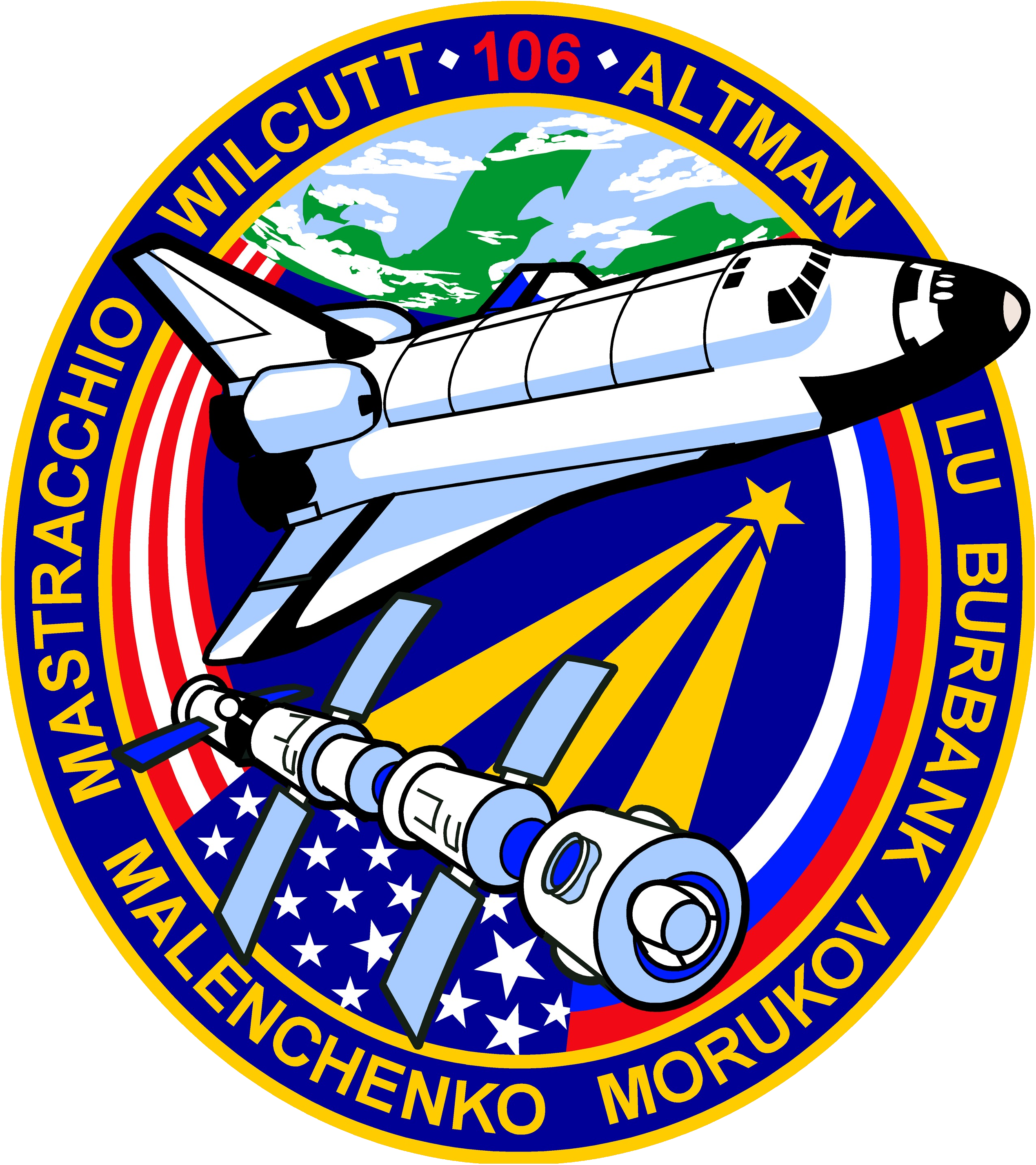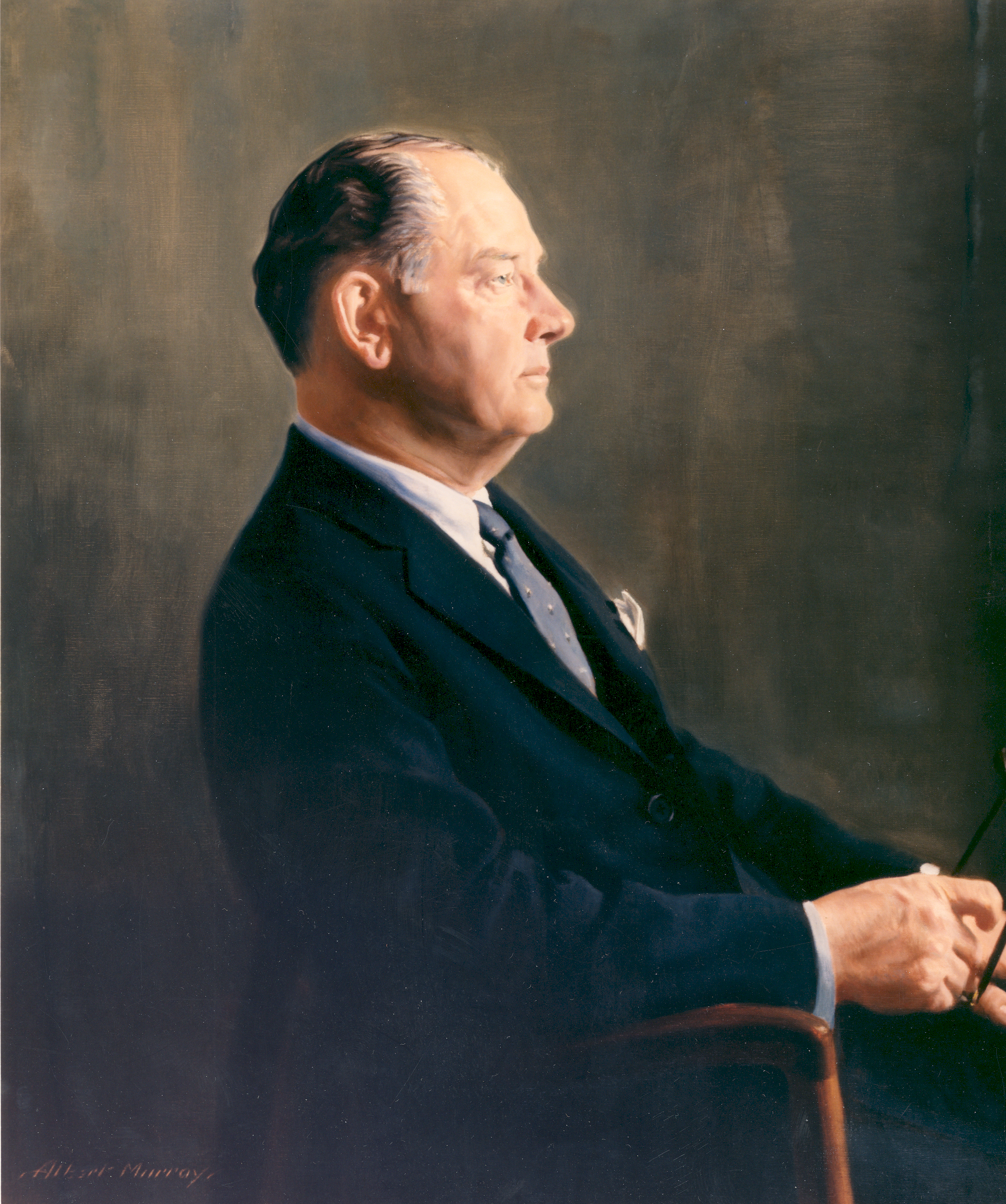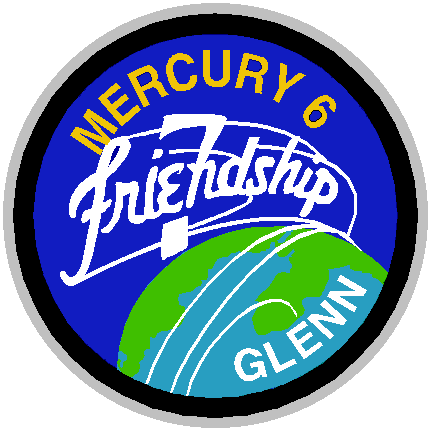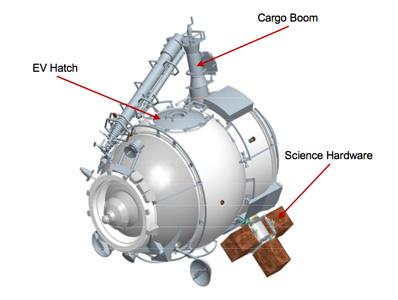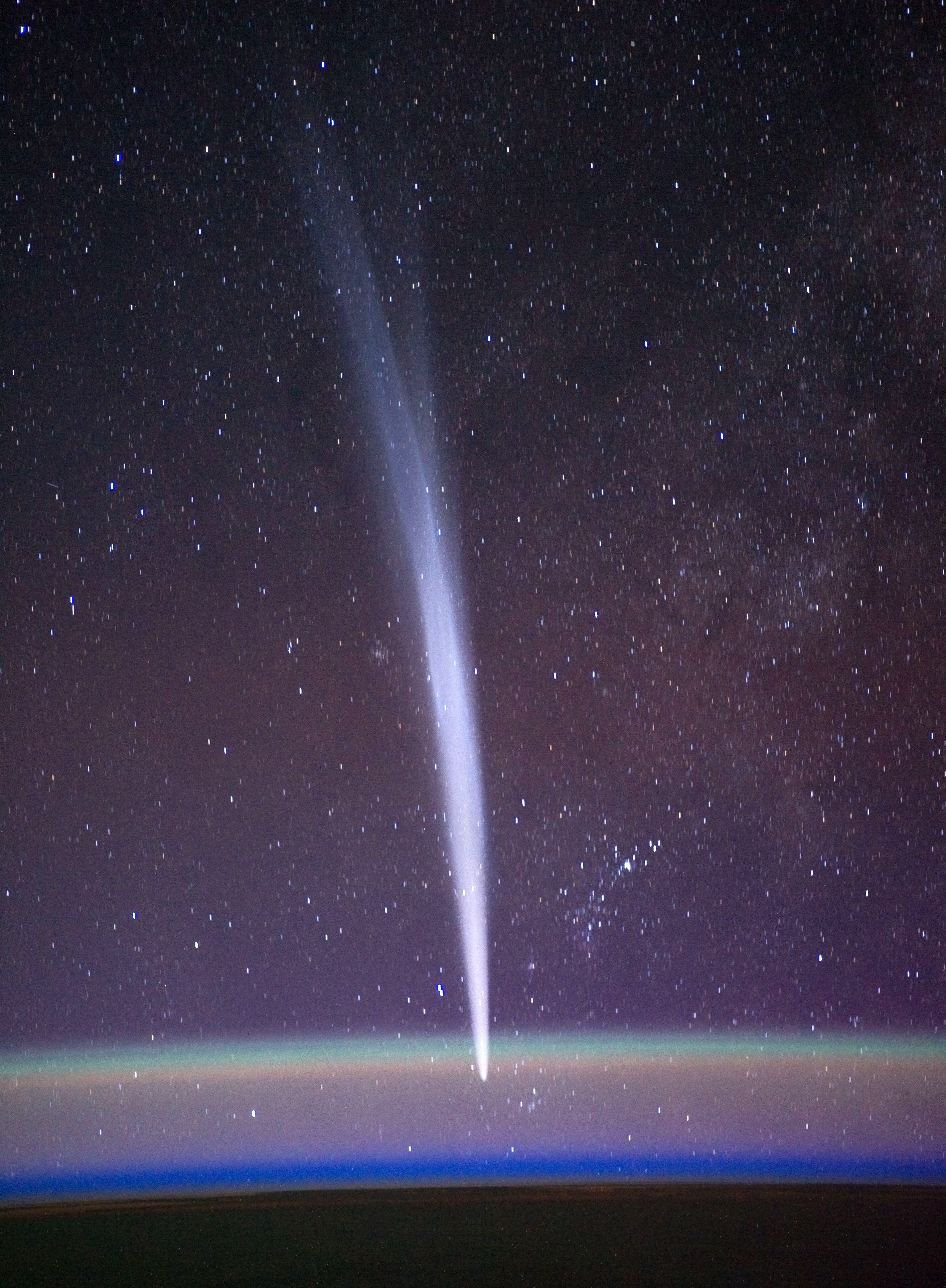|
Expedition 30
Expedition 30 was the 30th long-duration mission to the International Space Station (ISS). The expedition's first three crew members – Dan Burbank, Anton Shkaplerov and Anatoli Ivanishin – arrived on the ISS aboard Soyuz TMA-22 on 16 November 2011, during the last phase of Expedition 29. Expedition 30 formally began on 21 November 2011, with the departure from the ISS of the Soyuz TMA-02M spacecraft. The expedition ended on 27 April 2012, as Burbank, Shkaplerov and Ivanishin departed from the ISS aboard Soyuz TMA-22, marking the beginning of Expedition 31. Crew ;Source: NASA, ESA"ESA astronaut André Kuipers to spend six months on the ISS starting in 2011" |
Dan Burbank
Daniel Christopher Burbank (born July 27, 1961) is a retired American astronaut and a veteran of two Space Shuttle missions. Burbank, a Captain in the United States Coast Guard, is the second Coast Guard astronaut after Bruce Melnick. Early life and education Burbank was born in Manchester, Connecticut, and raised in Tolland, Connecticut, where he graduated from Tolland High School. He attended Fairfield University his freshman year before transferring to the United States Coast Guard Academy, where he earned his commission in 1985. In 1987, he went through flight training and became an instructor pilot, serving at various Coast Guard stations at Coast Guard Air Station Elizabeth City, Coast Guard Air Station Cape Cod, and Coast Guard Air Station Sitka. He has a master's degree in aeronautical science from Embry-Riddle Aeronautical University. NASA career Selected by NASA in April 1996, Burbank reported to the Johnson Space Center in August 1996. After completing two yea ... [...More Info...] [...Related Items...] OR: [Wikipedia] [Google] [Baidu] |
Pirates Of The Caribbean
''Pirates of the Caribbean'' is a Disney media franchise encompassing numerous theme park rides, a series of films, and spin-off novels, as well as a number of related video games and other media publications. The franchise originated with the theme park ride of the same name, which opened at Disneyland in 1967 and was one of the last Disneyland rides overseen by Walt Disney. Disney based the ride on pirate legends, folklore and novels, such as those by Italian writer Emilio Salgari. ''Pirates of the Caribbean'' became a media franchise in the 2000s with the release of '' The Curse of the Black Pearl'' in 2003; it was followed by four sequels. Produced by Jerry Bruckheimer and originally written by screenwriters Ted Elliott and Terry Rossio, the films have grossed over worldwide by 2019, putting the film franchise 14th in the list of all-time highest-grossing franchises and film series. The rides can be found at five Disney theme park resorts. Rides and attractions Pira ... [...More Info...] [...Related Items...] OR: [Wikipedia] [Google] [Baidu] |
Charlie Bolden
Charles Frank Bolden Jr. (born August 19, 1946) is a former Administrator of NASA, a retired United States Marine Corps Major General, and a former astronaut who flew on four Space Shuttle missions. He graduated from the United States Naval Academy with the class of 1968. Bolden became a Marine aviator and test pilot. After his service as an astronaut, he became Deputy Commandant of Midshipmen at the Naval Academy. On May 23, 2009, President Barack Obama announced the nomination of Bolden as Administrator of NASA and Lori Garver as deputy NASA administrator."Retired General Picked to Lead NASA" by Kenneth Chang, '''' May 24, 2009 ... [...More Info...] [...Related Items...] OR: [Wikipedia] [Google] [Baidu] |
NASA Administrator
The Administrator of the National Aeronautics and Space Administration is the highest-ranking official of NASA, the national space agency of the United States. The administrator is NASA's chief decision maker, responsible for providing clarity to the agency's vision and serving as a source of internal leadership within NASA. The office holder also has an important place within United States space policy, and is assisted by a deputy administrator. The administrator is appointed by the president of the United States, with the advice and consent of the United States Senate, and thereafter serves at the president’s pleasure. Former senator and astronaut Bill Nelson has served as the administrator since May 3, 2021. Duties and responsibilities The administrator serves as NASA's chief executive officer, accountable to the President for the leadership necessary to achieve the agency's mission. This leadership requires articulating the agency's vision, setting its programmatic and bu ... [...More Info...] [...Related Items...] OR: [Wikipedia] [Google] [Baidu] |
Friendship 7
Mercury-Atlas 6 (MA-6) was the first crewed American orbital spaceflight, which took place on February 20, 1962. Piloted by astronaut John Glenn and operated by NASA as part of Project Mercury, it was the fifth human spaceflight, preceded by Soviet orbital flights Vostok 1 and 2 and American sub-orbital flights Mercury-Redstone 3 and 4. The Mercury spacecraft, named ''Friendship 7'', was carried to orbit by an Atlas LV-3B launch vehicle lifting off from Launch Complex 14 at Cape Canaveral, Florida. After three orbits, the spacecraft re-entered the Earth's atmosphere, splashed down in the North Atlantic Ocean, and was safely taken aboard . Total mission flight time was four hours 55 minutes and 23 seconds. The event was named an IEEE Milestone in 2011. Preparation After the successful completion of the Mercury-Atlas 5 flight that carried Enos, a chimpanzee, in late November 1961, a press conference was held in early December. Reporters asked NASA's Robert Gilruth who wou ... [...More Info...] [...Related Items...] OR: [Wikipedia] [Google] [Baidu] |
Project Mercury
Project Mercury was the first human spaceflight program of the United States, running from 1958 through 1963. An early highlight of the Space Race, its goal was to put a man into Earth orbit and return him safely, ideally before the Soviet Union. Taken over from the US Air Force by the newly created civilian space agency NASA, it conducted 20 uncrewed developmental flights (some using animals), and six successful flights by astronauts. The program, which took its name from Roman mythology, cost $ (adjusted for inflation). The astronauts were collectively known as the " Mercury Seven", and each spacecraft was given a name ending with a "7" by its pilot. The Space Race began with the 1957 launch of the Soviet satellite Sputnik 1. This came as a shock to the American public, and led to the creation of NASA to expedite existing US space exploration efforts, and place most of them under civilian control. After the successful launch of the Explorer 1 satellite in 1958, crewed spacef ... [...More Info...] [...Related Items...] OR: [Wikipedia] [Google] [Baidu] |
John Glenn
John Herschel Glenn Jr. (July 18, 1921 – December 8, 2016) was an American Marine Corps aviator, engineer, astronaut, businessman, and politician. He was the third American in space, and the first American to orbit the Earth, circling it three times in 1962. Following his retirement from NASA, he served from 1974 to 1999 as a Democratic United States Senator from Ohio; in 1998, he flew into space again at age 77. Before joining NASA, Glenn was a distinguished fighter pilot in World War II, the Chinese Civil War and the Korean War. He shot down three MiG-15s, and was awarded six Distinguished Flying Crosses and eighteen Air Medals. In 1957, he made the first supersonic transcontinental flight across the United States. His on-board camera took the first continuous, panoramic photograph of the United States. He was one of the Mercury Seven, military test pilots selected in 1959 by NASA as the nation's first astronauts. On February 20, 1962, Glenn flew the '' Friend ... [...More Info...] [...Related Items...] OR: [Wikipedia] [Google] [Baidu] |
Poisk (ISS Module)
''Poisk'' (russian: Поиск, , Search), also known as the Mini-Research Module 2 (MRM 2), , or ''МИМ 2'', is a docking module of the International Space Station. Its original name was Docking Module 2 (, SO-2), as it is almost identical to the ''Pirs'' Docking Compartment. Added in 2009, ''Poisk'' was the first major Russian addition to the International Space Station since 2001. ''Poisk'' is overall the same design as the docking module ''Pirs''. Whereas ''Pirs'' had been attached to the nadir ("bottom") port of ''Zvezda'', ''Poisk'' is attached to the zenith ("top"); ''Pirs'' was closer to the Earth with the ISS in its usual orientation, and ''Poisk'' is on the other side. ''Poisk'' is Russian for ''explore'' or ''search''. ''Poisk'' combines various docking, EVA, and science capabilities. It has two egress hatches for EVAs in addition to the two spacecraft docking ports. Although ''Poisk'' is designated as Mini-Research Module 2, it arrived before Mini-Research Modul ... [...More Info...] [...Related Items...] OR: [Wikipedia] [Google] [Baidu] |
Pirs (ISS Module)
''Pirs'' ''(russian: Пирс'', meaning " pier") – also called Stykovochny Otsek 1 (SO-1; russian: Стыковочный отсек, "docking module") and DC-1 (Docking Compartment 1) – was a Russian module on the International Space Station (ISS). ''Pirs'' was launched on 14 September 2001, and was located on the '' Zvezda'' module of the station. It provided the ISS with one docking port for Soyuz and Progress spacecraft, and allowed egress and ingress for spacewalks by cosmonauts using Russian Orlan space suits. ''Pirs'' was docked to ''Zvezda'' for almost 20 years, until 26 July 2021, where it was decommissioned and undocked by Progress MS-16 to make way for the new '' Nauka'' module. Poisk module A second docking compartment, Stykovochniy Otsek 2 (SO-2), was planned with the same design. However, when the Russian segment of the ISS was redesigned in 2001, the new design no longer included the SO-2, and its construction was canceled. After another change of pla ... [...More Info...] [...Related Items...] OR: [Wikipedia] [Google] [Baidu] |
Strela (crane)
Strela (russian: Стрела, , crane arm) is a class of four Russian built cargo cranes used during EVAs to move cosmonauts and components around the exterior of the Soviet/Russian space station ''Mir'' and the Russian Orbital Segment of the International Space Station. Overview ''Mir'' featured two cranes mounted to its core module (delivered by Progress spacecraft), and the ISS also possesses two cranes, mounted to ''Poisk'' and Zarya. The cranes are unpowered telescopic poles assembled in sections, which measure around 6 feet (182 cm) when collapsed but, when extended using a hand crank, measure 46 feet (14 m) long. This means that the cranes on ''Mir'' could easily reach all of the main modules of the complex, and those attached to the ISS can be used to transfer objects the full length of the Russian Orbital Segment (ROS), from Zvezda to Zarya. The largest robotic arm on the ISS, Canadarm2 weighs 1,800 kilograms and is used to hold crew members during EVAs, move st ... [...More Info...] [...Related Items...] OR: [Wikipedia] [Google] [Baidu] |
Spacewalk
Extravehicular activity (EVA) is any activity done by an astronaut in outer space outside a spacecraft. In the absence of a breathable Earthlike atmosphere, the astronaut is completely reliant on a space suit for environmental support. EVA includes ''spacewalks'' and lunar or planetary surface exploration (commonly known from 1969 to 1972 as ''moonwalks''). In a stand-up EVA (SEVA), an astronaut stands through an open hatch but does not fully leave the spacecraft. EVA has been conducted by the Soviet Union/Russia, the United States, Canada, the European Space Agency and China. On March 18, 1965, Alexei Leonov became the first human to perform a spacewalk, exiting the Voskhod 2 capsule for 12 minutes and 9 seconds. On July 20, 1969, Neil Armstrong became the first human to perform a moonwalk, outside his lunar lander on Apollo 11 for 2 hours and 31 minutes. On the last three Moon missions, astronauts also performed deep-space EVAs on the return to Earth, to retrieve film cani ... [...More Info...] [...Related Items...] OR: [Wikipedia] [Google] [Baidu] |
C/2011 W3
Comet Lovejoy, formally designated C/2011 W3 (Lovejoy), is a long-period comet and Kreutz sungrazer. It was discovered in November 2011 by Australian amateur astronomer Terry Lovejoy. The comet's perihelion took it through the Sun's corona on 16 December 2011, after which it emerged intact, though greatly impacted by the event. As Comet Lovejoy was announced on the 16th anniversary of the SOHO satellite's launch it became known as "The Great Birthday Comet of 2011", and because it was visible from Earth during the Christmas holiday it was also nicknamed "The Great Christmas Comet of 2011". Discovery Comet Lovejoy was discovered on 27 November 2011 by Terry Lovejoy of Thornlands, Queensland, during a comet survey using a Schmidt–Cassegrain telescope and a QHY9 CCD camera. It is the third comet discovered by Terry Lovejoy. He reported that it was "a rapidly moving fuzzy object" of 13th magnitude, and additional observations were made by him over the next couple of nights. ... [...More Info...] [...Related Items...] OR: [Wikipedia] [Google] [Baidu] |

